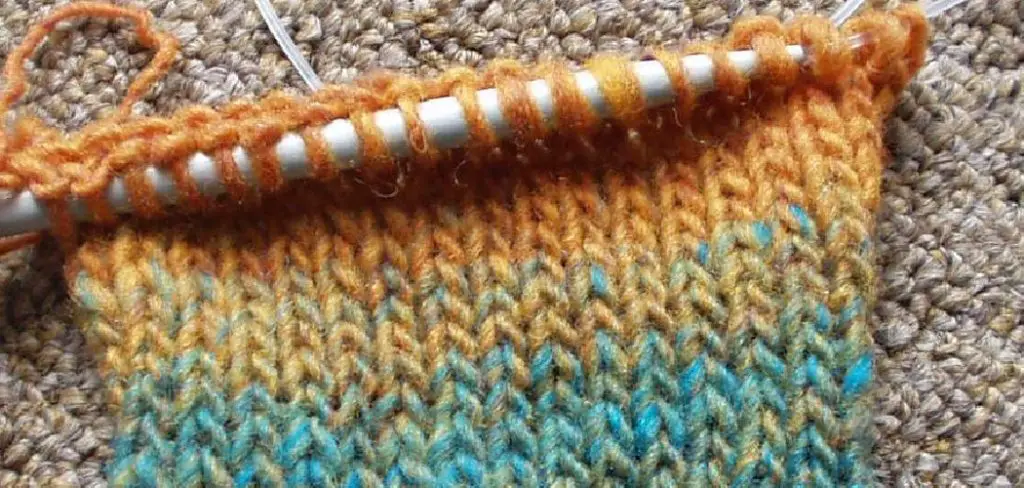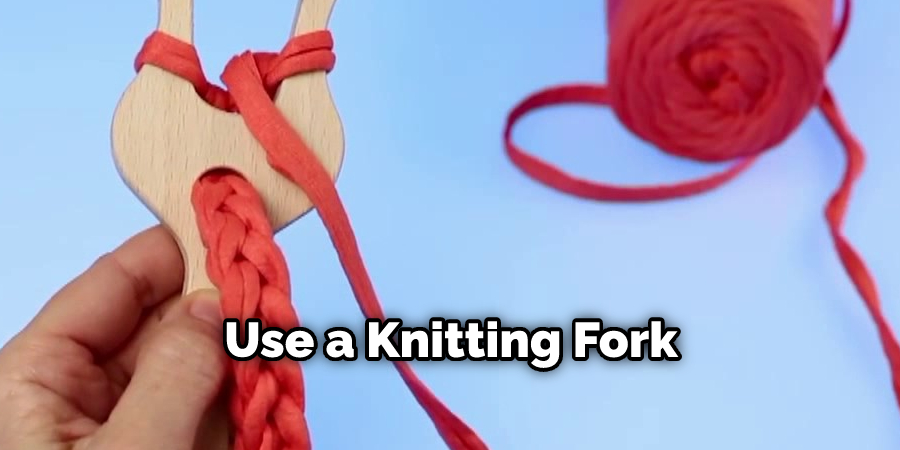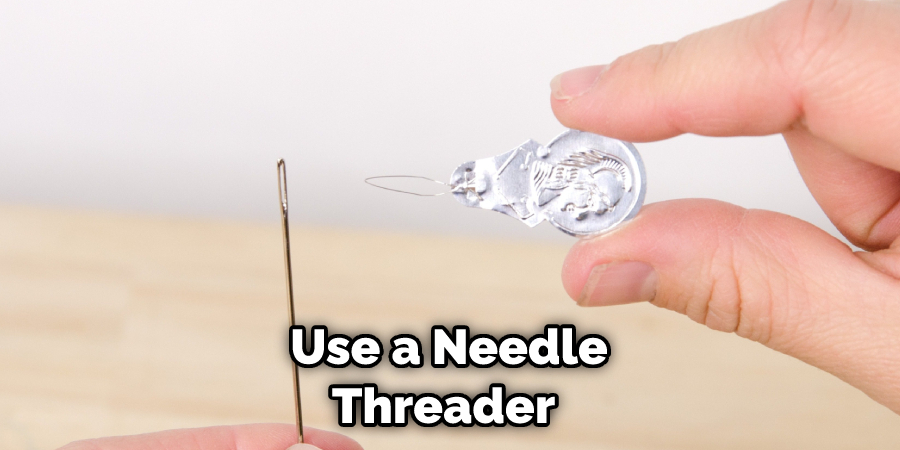Are you an avid knitter who is determined to undo a mistake in your knitting project? While it may seem daunting, with the right technique and some patience, you’ll be able to successfully “undo” and redo that offending stitch.

In this practical guide on how to undo cast off knitting, we will give you all the steps needed to have your knitwear looking good as new, whether you lost track of stitches or ended up with uneven sides — no problem! By following our advice, we know that tackling this issue can become a breeze. Let’s get started!
Can You Unravel the Knitting and Start Again?
The answer is yes! Unraveling a knitted piece of work and starting over is possible. It’s also known as frogging or rip-it-rip-it. To unravel your knitting, you will need to take out each stitch one at a time until you reach the beginning row. This can be tedious and time-consuming, but if done properly, it can make all the difference in having a successful project.
Before unraveling your work, make sure that you have enough yarn left to finish the project again. If you don’t have enough yarn, it’s best not to attempt unraveling your knitting journey so far. It’s always better to start fresh with an adequate amount of yarn instead of risking running out.
To start unraveling your knitting, thread a long yarn needle with the same type of yarn used in the project. Then take out each stitch one at a time, ensuring that you pull out enough to leave it loose and not too tight.

You will then need to move to the next row until you reach the beginning and can remove all of the stitches from the needles. Once this is done, wind up any remaining yarn into a ball and store it away for future projects.
Unraveling your knitting project can be tedious and time-consuming, but if done correctly, it’s an extremely helpful tool when something isn’t going right or if you want to start over again with a new project. Just remember that before unraveling, make sure you have enough yarn to start the project again.
9 Methods How to Undo Cast off Knitting
1. Use a Crochet Hook
If you have a crochet hook that is the same size or smaller than the knitting needles you used, you can use it to undo your work. Simply insert the hook into the first stitch on the needle and pull the stitch off of the needle.
Continue in this manner until all of the stitches have been removed from the needle. If you don’t have a crochet hook, you can also use a pair of scissors to cut the yarn and carefully unravel it from your knitting. However, this method should only be used when necessary, as it can cause the yarn to fray and weaken.
2. Cut the Yarn
If you are using yarn that can be easily undone (such as wool), you can cut the yarn and then pull on each end until the stitches unravel. This method is not recommended for yarns that are difficult to undo, such as acrylic, as it may damage or break the yarn. Suppose you can try to make the cut on a stitch that has been cast off previously.

Although it may be tempting to cut off the entire row of stitches, this can lead to uneven edges and will also make it more difficult to straighten out the stitches as you unravel them. Try to leave at least 2-3 inches (5-7.5 cm) of yarn on either side.
3. Use a Yarn Unwinder
A yarn unwinder is a tool that is specifically designed for undoing knitting. It consists of a cylindrical device with a handle that is attached to one end and a series of small teeth on the other end. To use it, simply insert the teeth into the first stitch on the needle and then twist the handle to wind the yarn around the cylinder.
Continue in this manner until all of the stitches have been removed from the needle. This can be a tedious and time-consuming process, but it is the safest way to undo your knitting without damaging the yarn. After all of the stitches have been removed from the needle, you can then start again with a fresh cast-on.
4. Use a Knitting Fork
A knitting fork is another tool that can be used to undo knitting. It consists of two prongs that are connected at one end and a handle at the other end. You can insert the prongs into your knitted stitches and pull them out, one at a time. This will unravel the knitting back to where you need it to be. Be sure to use caution when using the knitting fork so that you don’t accidentally snag or damage any of your stitches.

If you find that the knitting fork is too difficult to use, or if you want to save time, you can try using a looping tool instead. This will help you quickly and easily undo your knitted stitches without any hassle. Though it can be tricky to use at first, once you get the hang of it, it is a great tool for undoing your knitting.
5. Use your Fingers
If you do not have any tools available, you can use your fingers to undo your work. Simply insert your finger into the stitch that you’d like to undo and pull back on the yarn. This will release each loop one at a time. Depending on how much knitting there is to undo, this method may take longer than other methods, but it can be helpful if you do not have any tools available or prefer a slower pace.
As you go along, you can use a crochet hook to help you if needed. Make sure to keep track of the number of stitches that are undone so you know how many to cast back on at the end. However, this technique does require more caution and patience, as it can be easy to pull too hard or make mistakes.
6. Use a Spare Needle
If you don’t have a crochet hook, you can use a spare knitting needle to pick up the stitches from your project. Insert the spare needle into the first stitch on your cast-off edge, then lift up the bottom strand and pull it over onto the needle. Continue this process until you have all of your stitches back on a spare needle.
Once you have done that, you can then easily knit them back onto your working needles. Although this method is a bit more time-consuming than using the crochet hook, it can be just as effective. Just remember to take your time and make sure all of your stitches are picked up correctly.
7. Use a Safety Pin
Another option for picking up stitches is to use a safety pin. Begin by finding the last stitch that was bound off and threading a safety pin through it. Then, begin to unravel the yarn until you have enough stitches to make your project complete. You will now be able to pick up those undone stitches with a crochet hook or knitting needle and place them back onto the working needle.
You can then proceed with your pattern as usual. Remember to be careful when using a safety pin, as it can snag or even tear the yarn if not handled properly. With patience and practice, you will soon be able to undo cast-off knitting with ease!
8. Use a Paperclip
If you don’t have a safety pin, you can use a paper clip to pick up the stitches from your project. Gently pull each stitch off the needle and onto a paper clip. Be careful not to damage the stitches as you do so.
Once all of your stitches are secured on the paper clip, you can either start knitting again or rip out the yarn for a completely new project. The paper clip method is great for those who don’t have safety pins handy and need an easy way to undo their knitting. While it may not be as secure as the safety pin method, it’s still a viable option!
9. Use a Needle Threader
A needle threader is a tool that can be used to pick up stitches from your project. To use it, insert the smaller metal loop into the eye of a tapestry needle. Pull the threader through so that it takes on the shape of an “S” and holds your yarn in its loops.

Conclusion
Now that you know how to undo your work, you can experiment and try different techniques to see which one works best for you. Have fun exploring and expanding your knitting skills! We hope this guide on how to undo cast off knitting was helpful. Please share it with your friends on social media if you find it useful. And be sure to check back here soon for more informative guides like this one.


